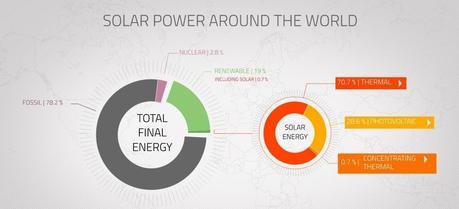 CNRS publishes a multimedia report on solar energy and its prospects for the future. (Credit: SNRS)
CNRS publishes a multimedia report on solar energy and its prospects for the future. (Credit: SNRS)The French National Center for Scientific Research (Centre national de la recherche scientifique, CNRS) has published a multimedia report explaining the history and current current state of solar energy.
The report focuses on solar energy and its prospects for the future, in particular at a time when the energy transition is an important topic of debate in France. Conceived for the general public, this multimedia presentation sheds light on the key challenges in the use of solar power, which has the potential to meet most of our energy needs if solutions can be developed for converting sunlight efficiently and at low cost.
The report is divided into three parts. The first two are devoted to the two main technologies for harnessing the sun’s power:
- Solar thermal energy, which converts sunlight into thermal energy that can be used for heating, cooling and generating electricity;
- Photovoltaic solar energy, which uses the photoelectric effect to convert sunlight directly into electricity.
Following an overview of the history and development of each technology, the report discusses the solar energy research being conducted by CNRS laboratories and their latest scientific findings. The third section, entitled “Solar Energy in Figures,” is an interactive presentation of the real share of solar power in the world’s energy supply.
The “Solar Energy” multimedia report can be accessed online here.
The French National Center for Scientific Research is the largest governmental research organization in France and the largest fundamental science agency in Europe. It employs 26,000 permanent employees (researchers, engineers, and administrative staff) and 6,000 temporary workers.
The report was produced with the backing of the CNRS Institute for Engineering and Systems Sciences (INSIS) and with the participation of CNRS researchers.

